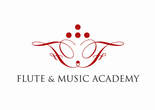
"After 21 years of teaching, I've collated well-tested strategies for crush your learning of anything, including your instrument."
--Ms Lin Shumei
--Ms Lin Shumei
1. Spaced Learning:
Concept:
This involves distributing practice sessions over time rather than cramming all information into one session. This approach enhances long-term retention by allowing the brain to consolidate and reinforce the learned material during intervals. Applying spaced learning to practice helps learners retain musical concepts, fingerings, and techniques more effectively.
How to apply:
1. For most students, practise daily for the best results. Even 10 minutes counts.
2. For those seeking more rigorous practice for auditions, exams or performances, one could practise in the morning and do similar practice at night.
Concept:
This involves distributing practice sessions over time rather than cramming all information into one session. This approach enhances long-term retention by allowing the brain to consolidate and reinforce the learned material during intervals. Applying spaced learning to practice helps learners retain musical concepts, fingerings, and techniques more effectively.
How to apply:
1. For most students, practise daily for the best results. Even 10 minutes counts.
2. For those seeking more rigorous practice for auditions, exams or performances, one could practise in the morning and do similar practice at night.
2. Testing and Retrieval Practice:
Concept:
Testing not only assesses one's current level of proficiency but also enhances memory retrieval, strengthening the neural connections associated with specific musical elements. Incorporating periodic self-assessment and quizzes into practice sessions encourages active recall and reinforces learning.
How to apply:
1. Do a regular recording (e.g. once a month) of the piece and review the level of performance.
2. This also includes mock runs of exam pieces in exam style before the actual exam.
Concept:
Testing not only assesses one's current level of proficiency but also enhances memory retrieval, strengthening the neural connections associated with specific musical elements. Incorporating periodic self-assessment and quizzes into practice sessions encourages active recall and reinforces learning.
How to apply:
1. Do a regular recording (e.g. once a month) of the piece and review the level of performance.
2. This also includes mock runs of exam pieces in exam style before the actual exam.
3. Deliberate Practice:
Concept:
This was popularized by psychologist Anders Ericsson and he emphasizes purposeful and focused practice aimed at addressing specific weaknesses. Applying deliberate practice to piano learning involves identifying challenging aspects of a piece, breaking them down, and dedicating concentrated effort to improve those specific elements. This method ensures efficient and targeted skill development.
How to apply:
1. For targeted weak bars or beat, work on it until rectified. I further recommend the golden number 3. So once one is able to play correctly, furtherr play 3 times correctly in a row. If one break down on 1st or 2nd time, reset to 0 again. And try again. This goal usually makes the correction focused and effective.
Concept:
This was popularized by psychologist Anders Ericsson and he emphasizes purposeful and focused practice aimed at addressing specific weaknesses. Applying deliberate practice to piano learning involves identifying challenging aspects of a piece, breaking them down, and dedicating concentrated effort to improve those specific elements. This method ensures efficient and targeted skill development.
How to apply:
1. For targeted weak bars or beat, work on it until rectified. I further recommend the golden number 3. So once one is able to play correctly, furtherr play 3 times correctly in a row. If one break down on 1st or 2nd time, reset to 0 again. And try again. This goal usually makes the correction focused and effective.
4. Pomodoro Technique:
Concept:
This involves breaking work into intervals (typically 25 minutes) separated by short breaks. Applying this technique to practice helps maintain focus and prevent burnout. Structuring practice sessions in this manner enhances concentration, productivity, and overall engagement with the material.
How to apply:
1. Apply this 25 - 30m-break, repeat till end.
2. Synergise with "Spaced learning" and "Deliberate learning" and see your retention soar!
Concept:
This involves breaking work into intervals (typically 25 minutes) separated by short breaks. Applying this technique to practice helps maintain focus and prevent burnout. Structuring practice sessions in this manner enhances concentration, productivity, and overall engagement with the material.
How to apply:
1. Apply this 25 - 30m-break, repeat till end.
2. Synergise with "Spaced learning" and "Deliberate learning" and see your retention soar!
5. Asking Questions:
Active engagement through questioning is crucial for deepening understanding. Learners should not hesitate to ask questions about musical theory, technique, or interpretation. Seeking clarification from instructors or utilizing online resources fosters a deeper connection with the material and accelerates the learning process.
6. Deep Learning:
Concept:
Deep learning in piano goes beyond surface-level understanding. It involves exploring the historical context of musical compositions, understanding the theory behind different genres, and connecting emotionally with the music. Developing a profound connection with the material facilitates more expressive and nuanced performances.
How to apply:
1. Read up about the composer and background of the work you are learning.
2. Can you spot any theory and aural skills you have learnt in your pieces. Otherwise, otherwise go back to "Ask your instructor"
3. Is your piece associated directly or indirectly with other art forms: movies, dance, Art etc..
Active engagement through questioning is crucial for deepening understanding. Learners should not hesitate to ask questions about musical theory, technique, or interpretation. Seeking clarification from instructors or utilizing online resources fosters a deeper connection with the material and accelerates the learning process.
6. Deep Learning:
Concept:
Deep learning in piano goes beyond surface-level understanding. It involves exploring the historical context of musical compositions, understanding the theory behind different genres, and connecting emotionally with the music. Developing a profound connection with the material facilitates more expressive and nuanced performances.
How to apply:
1. Read up about the composer and background of the work you are learning.
2. Can you spot any theory and aural skills you have learnt in your pieces. Otherwise, otherwise go back to "Ask your instructor"
3. Is your piece associated directly or indirectly with other art forms: movies, dance, Art etc..
7. Recall with association
Concept:
Retrieval of information is facilitated by linking it with related concepts, cues, or contextual clues. This technique leverages the brain's ability to connect information through associations, making it easier to retrieve and remember specific details. For example, associating a new vocabulary word with a familiar word or creating mnemonic devices are effective ways to enhance recall through association.
How to apply:
1. Using Mnemonics
E.g. Reading Lines for Treble Clef
Every Good Bear Doesn't Fight
2. Using familiar association
E.g. M.D (Mano destra) is known to majority people as "Managing Director". As most people are right handed, M.D = Right Hand comes naturally. For those who are left handed, one can add a "Not" to this memory. So M.D= Right Hand, NOT.
Conclusion:
In conclusion, effective learning is a multifaceted process that benefits from a combination of strategies.
Do you find this helpful?
Do share if you have more hacks that is not mentioned above!
Concept:
Retrieval of information is facilitated by linking it with related concepts, cues, or contextual clues. This technique leverages the brain's ability to connect information through associations, making it easier to retrieve and remember specific details. For example, associating a new vocabulary word with a familiar word or creating mnemonic devices are effective ways to enhance recall through association.
How to apply:
1. Using Mnemonics
E.g. Reading Lines for Treble Clef
Every Good Bear Doesn't Fight
2. Using familiar association
E.g. M.D (Mano destra) is known to majority people as "Managing Director". As most people are right handed, M.D = Right Hand comes naturally. For those who are left handed, one can add a "Not" to this memory. So M.D= Right Hand, NOT.
Conclusion:
In conclusion, effective learning is a multifaceted process that benefits from a combination of strategies.
Do you find this helpful?
Do share if you have more hacks that is not mentioned above!






